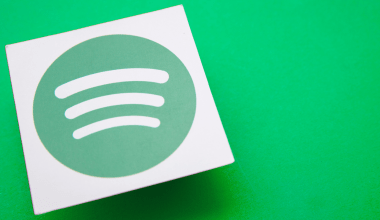Shazam, the music discovery app, has become a household name for millions of users worldwide. It allows listeners to identify songs playing in their environment with just a tap, using advanced audio recognition technology. However, Shazam is more than just a song identification tool; it’s a powerful platform for artists to gain visibility, engage with fans, and even earn revenue. This article explores the various services Shazam provides for artists and its payout system.
Services Provided by Shazam for Artists
Shazam offers a range of services designed to help artists expand their reach and connect with listeners. Here are the key offerings:
- Music Discovery and Fan Engagement:
Shazam’s primary function is to identify songs playing around users, making it a powerful discovery tool. When a listener “Shazams” a song, the app displays the artist’s name, track title, and often provides additional content like music videos, lyrics, and artist biographies. This instant recognition helps artists reach new audiences and encourages users to explore more of their music. - Artist Insights and Data Analytics:
For artists and their management teams, Shazam offers valuable insights into listener behavior. Through the Shazam for Artists platform, musicians can access data on how many times their songs have been Shazamed, where their listeners are located, and which tracks are trending. These analytics can inform marketing strategies, tour planning, and promotional activities, allowing artists to make data-driven decisions to enhance their reach. - Integration with Apple Music and Spotify:
Shazam is integrated with major streaming platforms like Apple Music and Spotify. When a user identifies a song, they are often provided with a link to stream the full track on these platforms. This seamless integration drives traffic to streaming services, which can increase an artist’s plays, followers, and overall exposure. - Promotional Opportunities and Artist Pages:
Artists can claim their Shazam profile, allowing them to customize their artist page. This feature lets musicians add promotional content, such as upcoming tour dates, exclusive videos, and social media links. Shazam also offers opportunities for artists to be featured in playlists or promoted within the app, further boosting visibility. - Shazam Charts and Playlists:
Songs frequently Shazamed globally or in specific regions appear on Shazam’s charts, which are updated daily. Being featured on these charts can significantly boost an artist’s exposure. Additionally, Shazam curates playlists based on trending songs, giving artists another channel to reach listeners.
Payout System for Artists
Shazam itself does not directly handle payouts to artists for song plays or identifications. Instead, Shazam serves as a discovery tool that drives listeners to streaming platforms like Apple Music and Spotify, where the actual music consumption happens. The payout to artists, in this case, comes from these streaming services, which compensate musicians based on their respective payout models. Here’s a breakdown of how the system works:
- Streaming Payouts:
When a song is identified on Shazam and the user clicks through to stream it on Apple Music, Spotify, or another platform, the artist earns revenue from the streaming service. The payout rate depends on several factors, including the streaming platform’s payout rate, the listener’s location, and whether the listener has a paid or free account. - Performance Royalties:
Artists may also receive performance royalties if their music is Shazamed from a public venue, such as a bar, restaurant, or store. Performance rights organizations (PROs) like ASCAP, BMI, or PRS for Music track public performances and distribute royalties to the respective rights holders. However, this process is more complex and often requires the venue to report music usage. - Mechanical Royalties:
If Shazam leads to a user downloading a track from a digital store (like iTunes), the artist receives a portion of the revenue. This payout typically includes mechanical royalties, which are paid whenever a song is reproduced or sold, such as through a digital download. - Synchronization of Data with Apple Music:
Since Apple acquired Shazam in 2018, there has been a closer integration with Apple Music. Artists whose music is available on Apple Music may find additional benefits in terms of data synchronization and streamlined payouts, but the exact financial arrangements remain part of broader agreements with the Apple Music service rather than Shazam directly. - Indie Artists and Emerging Talent:
For independent artists and emerging talent, Shazam serves as a cost-effective promotional tool. While there is no direct payout from Shazam, the increased visibility and potential for virality can lead to a significant uptick in streaming revenue, sales, and even live performance opportunities. Many indie artists have found their songs going viral after being Shazamed multiple times, leading to greater career opportunities.



